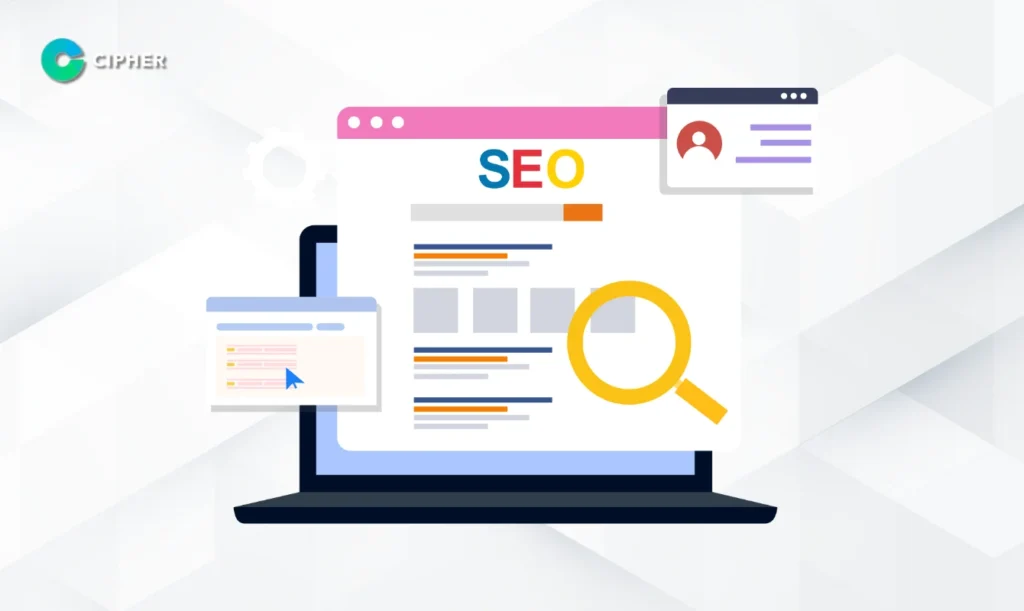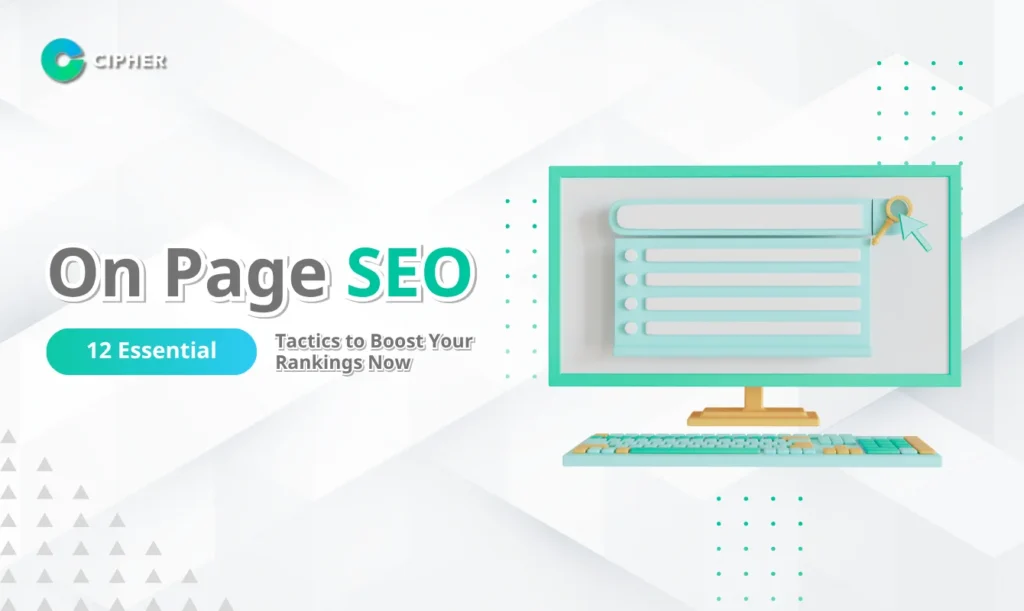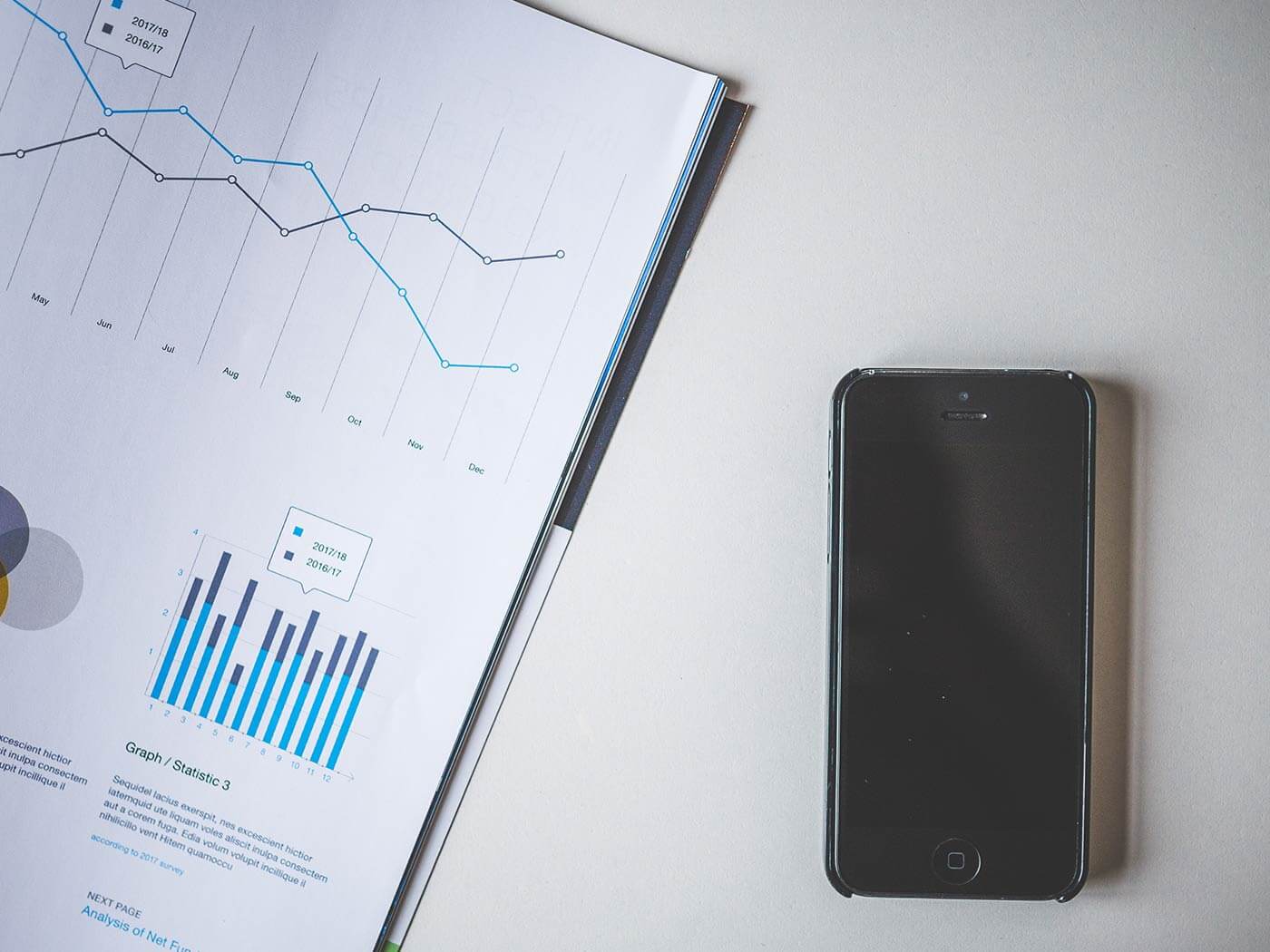No matter how beautiful your website is, if nobody visits it, it’s like a store with no customers… So how can you make your website rank well on Google? The answer is understanding what is on-page SEO and implementing it correctly. This article will introduce you to on-page SEO—the most crucial SEO process that can help your website reach Google’s first page!
Table of Contents
What is On-Page SEO?

On-page SEO refers to the optimization of various elements within your own website (sometimes called “SEO on-site”) to make it suitable and easy to read for both users and search engines like Google. The goal is to help Google understand what your webpage is about and which search keywords it relates to, so it can rank your website appropriately.
The essence of on-page SEO optimization lies in making your website as readable and suitable for your target audience as possible. This ensures users have a good experience, and Google will help your page rank better on search results.
Why is On-Page SEO Important in the SEO Process?

On-page SEO is crucial to the SEO process because it’s one of the three main components of SEO (the other two being Off-Page SEO and Technical SEO). Good on-page SEO optimization clearly impacts website rankings. Based on the experience of many experts:
- Webpages that never appeared in search results can reach pages 2-3
- Webpages previously at the bottom of the first page can jump to the top 3 positions
- It helps websites gain organic traffic without paying for advertising
- Increases conversion rates and click-through rates (CTR)
- Enhances brand awareness
Without good on-page SEO, no matter how much you invest in promoting your website or building backlinks, it’s difficult to achieve good results. SEO on-site is therefore a fundamental basis that shouldn’t be overlooked.
How Does the SEO Process Work?
To better understand how on-page SEO works, let’s first look at how search engines operate:
- Crawling – Google’s bots visit, survey, and scan data from various pages of your website, reading code and tags
- Indexing – Bots take the collected data and index or store it in Google’s database for retrieval when someone searches for related terms
- Ranking – When someone searches, Google evaluates and scores content from various pages to select the ones that best answer searchers’ queries (using “Ranking Factors,” of which on-page SEO optimization is a crucial part)
Good on-page SEO helps Google understand your website’s content better and evaluate whether your site is high-quality and answers searchers’ queries well. This is how to efficiently get your page to appear on Google’s first page.
12 Essential Components of On-Page SEO
1. Creating Quality Content (E-A-T Content)
Google prioritizes quality content using the E-A-T principle:
- Expertise – Content comes from websites with expertise in that field
- Authoritativeness – Content comes from credible authors with actual positions or knowledge in that field
- Trustworthiness – Content is reliable with clear references to sources
Good content must provide value to readers, be accurate, useful, and address what readers are searching for. Good SEO on-site always starts with quality content.
2. Appropriate Keyword Usage
Selecting appropriate keywords is a crucial component of on-page SEO optimization. Follow the principle of “1 page, 1 main keyword” for content clarity. Characteristics of good keywords include:
- Relevance to your content and business
- Appropriate search volume
- Competitiveness (not too high keyword difficulty)
Keyword placement should be natural, not excessive (avoid keyword stuffing), and placed in important positions such as:
- In the Title Tag
- In the Meta Description
- In the first 100-150 words of content
- In Heading Tags (H1, H2, H3)
- In the article URL
3. SEO Writing & Readability
Writing content suitable for SEO on-site doesn’t mean stuffing as many keywords as possible, but writing clearly, concisely, and beneficially for readers. Writing techniques include:
- Distributing keywords naturally
- Using short paragraphs, no more than 5 lines
- Using bullet points, numbers, and text emphasis with bold and italic
- Inserting quotes between content to attract attention
- Using Heading Tags (H1, H2, H3) to organize content systematically
- Content should be of appropriate length (at least 1,000 words)
4. Using Images and Diverse Media
Adding images and various media formats makes content more interesting and keeps readers on your website longer, which is a good signal for Google. You should include:
- Images relevant to the content
- Infographics that summarize information for easy understanding
- Videos that provide additional explanation
- Interesting GIFs or animations
- Interactive media for reader engagement
5. Page Titles (Title Tags) and Site Name
The Title Tag is the name of your page that appears in Google search results and is the first thing users see. The Site Name is the website name that appears after the Title Tag, for example, “What is On-Page SEO? | Your Brand” where “Your Brand” is the Site Name. Good page naming principles:
- Length not exceeding 60 characters (anything longer will be cut off in search results)
- Main keyword placed at or near the beginning
- Attractive, making people want to click and read
- Clearly conveying what the content is about
6. Page Descriptions (Meta Descriptions)
Meta Description is a short text explaining page content, displayed under the Title Tag in search results. Principles for good Meta Descriptions:
- Length not exceeding 150-160 characters
- Concisely explaining page content
- Naturally including the main keyword
- Persuading people to click and read more
7. Image Optimization
Image optimization is another component of on-page SEO that many overlook. Besides making your website load faster, it helps Google better understand image content:
- Name image files meaningfully, e.g., “on-page-seo-techniques.jpg” instead of “IMG001.jpg”
- Add Alt Text (image description) with keywords that clearly describe the image
- Choose appropriate file formats: PNG for high-quality images, JPEG for general images, and WebP for images that need size reduction while maintaining quality
- Compress image sizes appropriately for website display
8. Improving Website Speed
Website loading speed directly affects User Experience and Google rankings. A good on-page SEO optimization process must consider making your website load faster by:
- Choosing quality hosting suitable for your website size
- Compressing images and files to smaller sizes
- Using Lazy Loading techniques for images
- Installing only necessary plugins
- Using a cache system for faster loading on subsequent visits
9. Making Your Website Mobile-Friendly
Today, most people use mobile phones to access websites more than computers. Making your website display well on mobile is therefore a crucial component of on-page SEO:
- Use Responsive Design that adjusts to screen size
- Arrange elements appropriately for mobile use
- Text must be easy to read, not too small
- Buttons must be easy to press with adequate spacing
10. SEO-Friendly URLs
Good URLs should be short, concise, and clearly describe page content. Principles for good URL setting:
- Use easy-to-read, understandable words
- Include main keywords, e.g., “what-is-on-page-seo”
- Use all lowercase letters
- Use hyphens (-) instead of spaces
- Avoid special characters
- Preferably use English (for universality and easier sharing)
11. Internal and External Linking
Linking both within and outside your website helps Google understand the structure and relationship of content better:
Internal Links:
- Connect to other pages on your website
- Help readers explore other content on your site
- Distribute SEO value to various pages
- Use meaningful and relevant anchor text (the text that forms the link)
External Links:
- Connect to other quality and relevant websites
- Demonstrate reference to reliable information
- Increase the credibility of your content
12. Making Your Website Easy to Share
Making your website easily shareable increases access opportunities and creates traffic for your website:
- Add clearly visible Social Share buttons
- Set up Open Graph and Twitter Card so your website displays beautifully when shared
- Create shareable, useful, and valuable content
Develop Content According to Target Audience Personas
Understanding and developing content according to target audience personas is an essential part of On-Page SEO that is often overlooked but significantly impacts user response and user engagement, which are crucial factors in Google’s ranking.
What is a Persona? A persona is a representation of target users or customers created based on real data to better understand the needs, behaviors, and problems of the target audience. Personas include details about:
- Demographic information (age, gender, occupation, income)
- Interests and lifestyle
- Needs and problems they are facing
- Internet usage and information search behavior
- Customer journey
- Analyze and Create Clear Personas:
- Study data from website analytics (Google Analytics)
- Survey opinions and needs of current customers
- Analyze competitors and their target audiences
- Adjust Language and Tone to Suit the Persona:
- Expert Persona: Use technical language and go into detail
- Beginner Persona: Use easy-to-understand language, explain technical terms
- Executive Persona: Focus on strategic information and business outcomes
- Choose Keywords That Align with Persona Search Queries:
- Analyze search terms that the target audience actually uses from keyword analysis tools
- Consider search intent for each persona
- Adjust keyword usage to match the knowledge level and expertise of the persona
- Create Content Structure That Addresses Persona Needs:
- Answer questions that the target audience frequently searches for
- Solve problems that the target audience is facing
- Present information in formats suitable for the persona’s learning style (e.g., videos, infographics, text)
- Adjust Call-to-Action (CTA) to Align with the Persona’s Decision Journey:
- Awareness stage Persona: CTAs that invite further learning
- Consideration stage Persona: CTAs that encourage comparison or trial
- Decision-ready Persona: Clear CTAs for purchase or contact
Benefits of On-Page SEO According to Personas:
- Increased user engagement (longer time on site, reduced bounce rate)
- Creates relevance for Google that our content is related to search queries
- Increases conversion rate because content meets user needs
- Builds long-term impression and brand loyalty
Good On-Page SEO isn’t just about technical optimization, but also about deeply understanding your target audience. Developing content according to personas is therefore a key strategy that will help your website stand out and achieve sustainable good rankings on Google.
Implementing On-Page SEO Services That Can Help Your Website Rank First on Google
By now, you may understand that on-page SEO is a detailed and complex process. Many people may not have enough time to study and do everything themselves. Professional SEO services can help make getting your page to the first page of Google easy for you!
Comprehensive SEO on-site services with a team of highly experienced experts can help optimize every component of on-page SEO optimization on your website, from:
- Analyzing and finding keywords suitable for your business, both main Focus Keywords and Longtail Target Keywords
- Improving structure and content to be SEO-friendly
- Setting up Title Tags, Meta Descriptions, Site Names, and Heading Tags that attract both people and Google
- Optimizing images to load quickly with appropriate Alt Text
- Planning Internal Link strategy to increase SEO power for every page
- Increasing website speed with Core Web Vitals adjustment techniques
- Ensuring your website displays well on all devices
With professional on-page SEO services, you’ll see clear results: better Google rankings, increased traffic, and higher conversions. All this with a professional team that understands both the science and art of the SEO process.
Interested in consulting about On Page SEO and digital marketing strategies suitable for your business? Contact us at 081-633-3636 or fill out the contact form on our website right away!
Summary
Frequently Asked Questions
How long does On-Page SEO take to show results?
On-page SEO may take 2-6 months to show clear results, depending on keyword competition. Basic optimization may show faster results in the first 1-2 months, but sustainable ranking improvement requires consistency and regular content updates.





